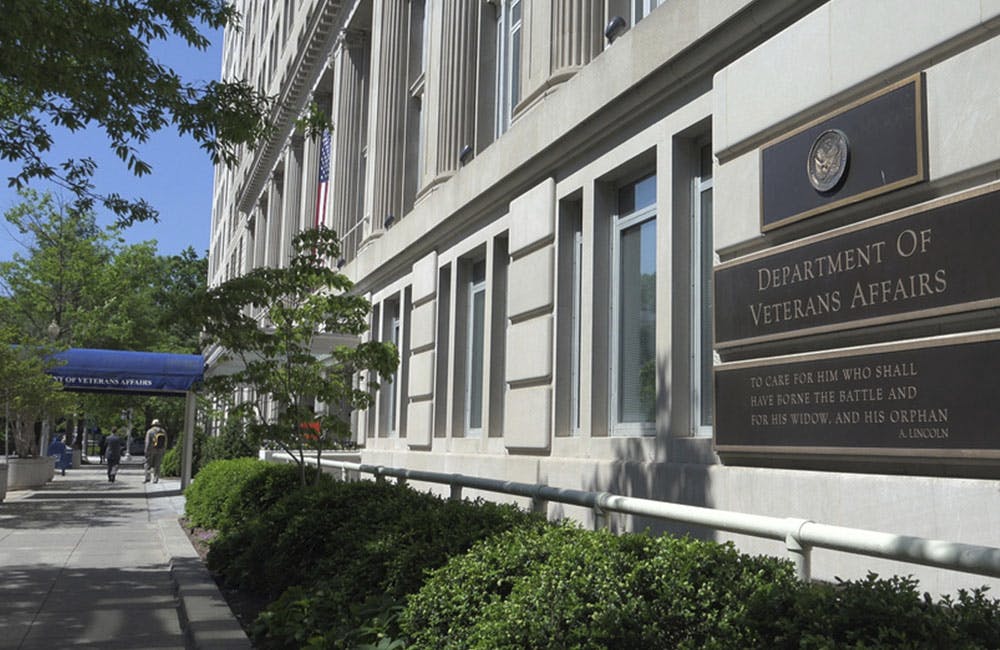Army’s New Information Warfare Units to Launch in 2026
Army Cyber Command’s Theater Information Advantage Detachments will bolster information advantage against threats from Russia and China.

The Army will deploy next fiscal year its new Theater Information Advantage Detachments (TIADs), which would track information warfare around adversaries like China and Russia as part of the service’s structure redesign plan released earlier this year, Army Cyber Command (ARCYBER) officials said this week.
“The information dimension is becoming increasingly important in modern warfare,” Lt. Gen. Maria Barrett, commander of ARCYBER, said Monday during AUSA’s Annual Meeting and Exposition in Washington, D.C. “These new units will provide commanders with the tools and capabilities they need to operate effectively in a contested information environment.”
Staffing the TIADs will include Army specialists comprising psychological operations staff, civil affairs specialists and cyberspace experts. TIADs will also have access to advanced data analytics, machine learning and other emerging technologies to quickly analyze large amounts of data and identify patterns that may indicate malicious activity, said ARCYBER Science Advisor and Chief Analytics Officer Al Mollenkopf.
“The data we collect is a critical asset,” said Mollenkopf. “By using AI and automation, we can analyze this data more effectively and identify potential threats. … AI and automation together can help us to see trends in data that is very difficult for us to see at the current scale.”
What Are the Army’s New Information Warfare Units?
The units are part of the Army’s modernization plan over the next decade that would future-proof the service for evolving threats in cyberspace. Officials said at AUSA this week they expect to launch operations for the TIADs in fiscal year 2026.
The new unit type will monitor information warfare across the world to counter adversarial efforts on the field level and will work closely with other components of the Joint Force and with international partners, added ARCYBER Director for Information Warfare Aaron Pearce.
“The proposition here is that these standing cross-functional teams will live in that environment day in, day out,” said Pearce. “[The TIADs will] provide their commanders opportunities to create information effects and to protect against adversary information warfare effects in competition.”
The Army will set up three TIAD detachments. Two will be regional — one each in Europe and the Pacific, according to Barrett. The third will be an interterritorial detachment for the Army Cyber Command. Cyber adversaries can operate outside of specific regions, as the domain is not geographic, Pearce said.
“My proposition to you is that like cyberspace, information is inherently trans-regional information and information effects,” said Pearce. “You have to be prepared to follow those adversaries wherever they go in the information space.”
TIADs are a significant step forward in the ARCYBER’s efforts to combat the evolving threat of information warfare. Emerging technology like AI and deepfakes can disrupt the information ecosystem and threaten American interests, Pearce added.
“The threat of deepfakes and other forms of synthetic media is a serious concern,” said Pearce. “We must be able to identify and counter these threats before they can cause significant harm.”
Echoing a threat briefing, Barrett noted the type of dangers the units are focused on.
“We’ve got cyber mission forces actively working to ensure that foreign line interests do not impede our elections, both in cyberspace and in the information dimension,” said Barrett. “We have two nation-state adversaries, at least, with information as part of their doctrine to fight adversaries.”
This is a carousel with manually rotating slides. Use Next and Previous buttons to navigate or jump to a slide with the slide dots
-

NSF Wants Industry Driving Quantum Innovation
The agency is pushing for partnerships to enhance the research community as Congress weighs additional legislation.
3m read -

White House Science Chief: US-Driven AI Sets Global Standards
Michael Kratsios outlined how American AI technology on the global stage will help standardize the tech and counter China’s influence.
5m read -

Modernizing Critical Infrastructure in the Face of Global Threats
Officials are expanding the latest strategies in boosting defense infrastructure, including securing satellite communications, upgrading enterprise-wide technology, optimizing data management.
20m watch -

Trump AI Orders Call for Speed in Building Infrastructure
The directives call for expanding AI infrastructure, streamlining federal permitting and promoting AI exports.
4m read -

DOD Accelerates Software Modernization with Agile DevSecOps Push
The Pentagon's software implementation plan tackles cultural hurdles and integrates security early to deliver critical capabilities faster.
6m read -

White House Unveils AI Action Plan to Secure Global Dominance
The strategy outlines steps to accelerate private sector innovation, build critical infrastructure and advance U.S. leadership in AI policy and security.
3m read -

VA's Platform One Powers Rapid Innovation to Bolster Digital Services
VA's Platform One accelerates software development timelines from weeks to hours, ultimately enhancing digital services for veterans.
5m read -

Opinion: Original Intelligence Is the Missing Piece for AI Transformation
Limitations of AI agents and development drive growing needs for workforce development and "original intelligence."
3m read -

Pentagon's $200M AI Contracts Signal Broader Effort to Transform Talent
The Army is leveraging Silicon Valley, reservist programs and new hiring strategies to integrate critical digital skills in its ranks.
5m read -

AI Foundations Driving Government Efficiency
Federal agencies are modernizing systems, managing risk and building trust to scale responsible AI and drive government efficiency.
43m watch -

Agencies Tackle Infrastructure Challenges to Drive AI Adoption
Federal agencies are rethinking data strategies and IT modernization to drive mission impact and operational efficiency as new presidential directives guide next steps.
5m read Partner Content -

Generative AI Demands Federal Workforce Readiness, Officials Say
NASA and DOI outline new generative AI use cases and stress that successful AI adoption depends on strong change management.
6m read
















